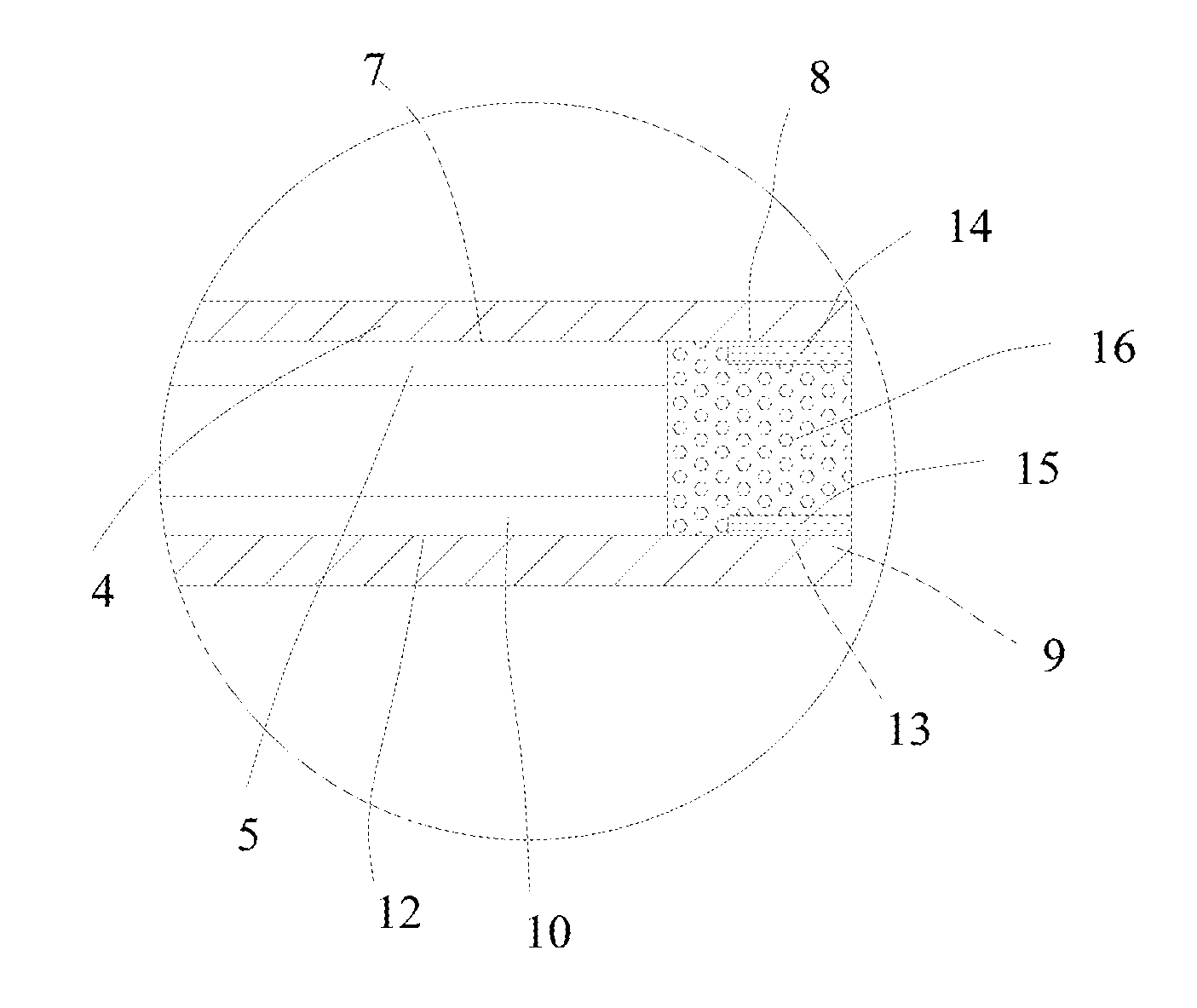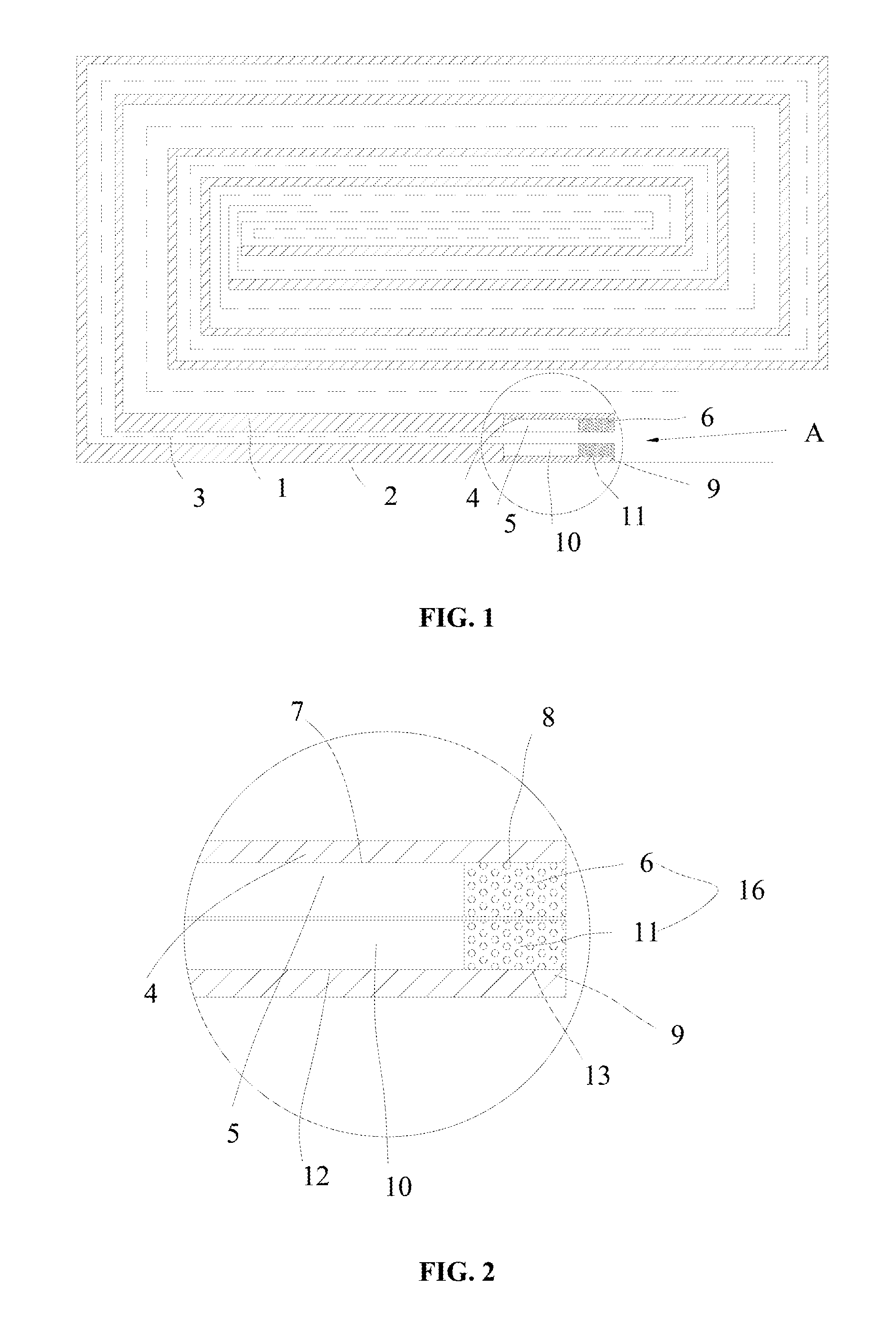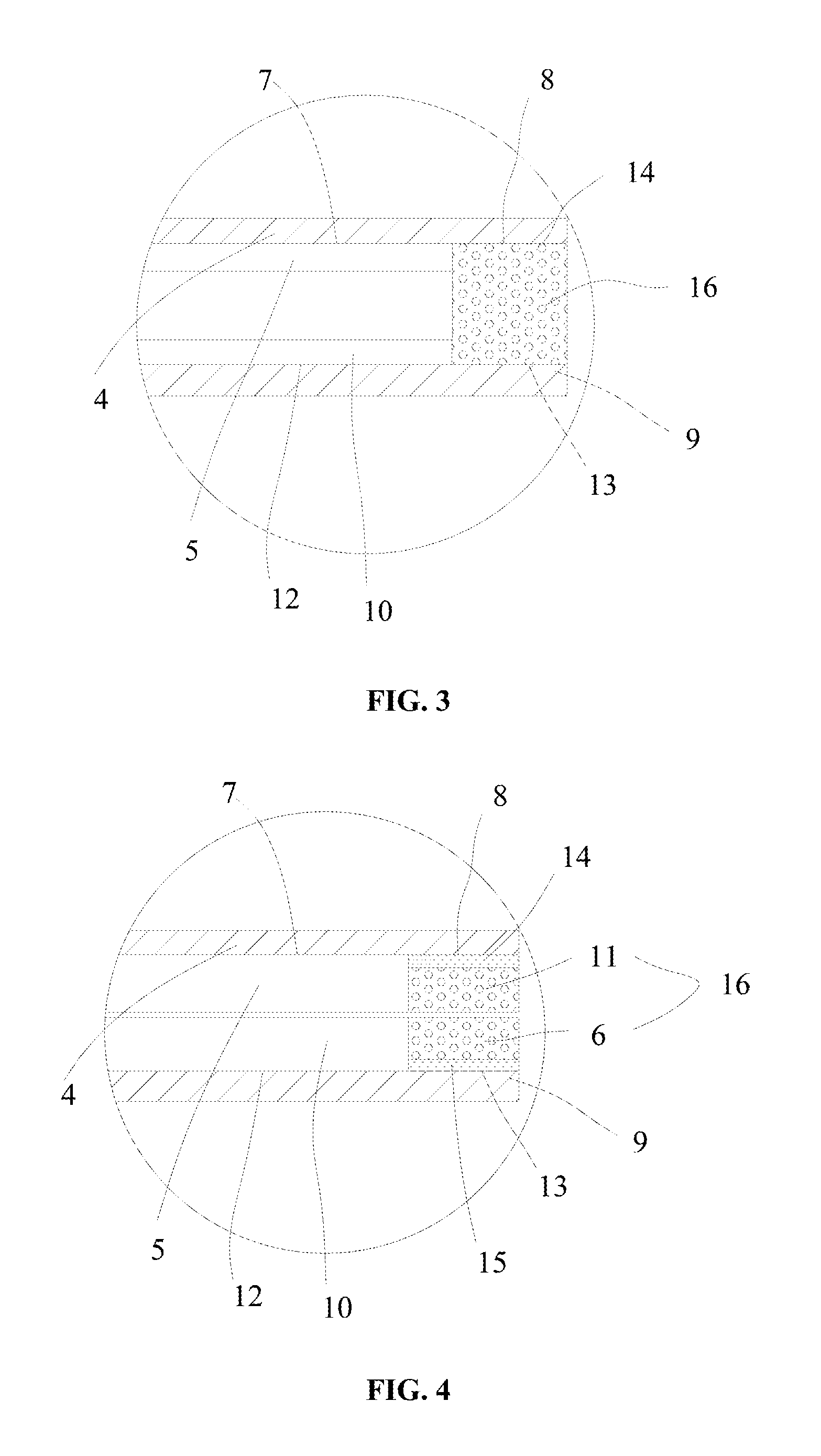Lithium-ion battery
a lithium-ion battery and lithium-ion technology, applied in the field of lithium-ion batteries, can solve the problems that the polyaniline layer cannot be directly contacted, affect the normal charging performance of the battery, etc., and achieve the effects of enhancing the electrical conductivity of the polyaniline layer and the polyphenyl layer, discharging excess electricity, and reducing the voltage of the battery
- Summary
- Abstract
- Description
- Claims
- Application Information
AI Technical Summary
Benefits of technology
Problems solved by technology
Method used
Image
Examples
embodiment 1
[0026]As illustrated in FIG. 1 and FIG. 2, a lithium-ion battery comprises an anode plate 1, a cathode plate 2, a separator 3 and electrolyte, wherein the separator 3 is arranged between the anode plate 1 and the cathode plate 2. The anode plate 1 comprises an anode current collector 4 and an anode active material layer 5. The anode current collector 4 is provided with an anode coating area 7 and an anode blank area 8, and the anode active material layer 5 is coated in the anode coating area 7. The cathode plate 2 comprises a cathode current collector 9 and a cathode active material layer 10. The cathode current collector 9 is provided with a cathode coating area 12 and a cathode blank area 13, and the cathode active material layer 10 is coated in the cathode coating area 12. When both the anode blank area 8 and the cathode blank area 13 are coated with a polymer layer 16, the two polymer layers 16 are mutually contacted.
[0027]A polyaniline layer 6 or a polyphenyl layer 11 is config...
embodiment 2
[0028]As illustrated in FIG. 3, embodiment 2 differs from embodiment 1 in that: a polyphenyl layer 11 of this embodiment is coated on an anode blank area 8; moreover, a first intermediate layer 14 is arranged between the polyphenyl layer 11 and the anode blank area 8 of the embodiment. A polyaniline layer 6 is coated on a cathode blank area 13. The polyaniline layer 6 is contacted with the polyphenyl layer 11. A potential when arranging the first intermediate layer 14 is more stable than a potential when being directly coated on an anode current collector 4. Therefore, excess electricity can be discharged quickly, such that safety of overcharging is improved. Generally, a material of the first intermediate layer 14 is the same as a material of an anode active material layer 5.
[0029]Other structures are the same as the structures of embodiment 1, which are thus not described herein any further.
embodiment 3
[0030]As illustrated in FIG. 4, embodiment 3 differs from embodiment 2 in that: a second intermediate layer 15 is arranged between a polyaniline layer 6 and a cathode blank area 13 of the embodiment. Thickness sum of a polyphenyl layer 11 and a first intermediate layer 14 is no more than thickness of an anode active material layer 5, and thickness sum of the polyaniline layer 6 and the second intermediate layer 15 is no more than thickness of a cathode active material layer 10, thus being beneficial for improving energy density of the battery. Moreover, an effect of discharge is better than that of embodiment 2.
[0031]Other structures are the same as the structures of embodiment 2, which are thus not described herein any further.
PUM
 Login to View More
Login to View More Abstract
Description
Claims
Application Information
 Login to View More
Login to View More - R&D
- Intellectual Property
- Life Sciences
- Materials
- Tech Scout
- Unparalleled Data Quality
- Higher Quality Content
- 60% Fewer Hallucinations
Browse by: Latest US Patents, China's latest patents, Technical Efficacy Thesaurus, Application Domain, Technology Topic, Popular Technical Reports.
© 2025 PatSnap. All rights reserved.Legal|Privacy policy|Modern Slavery Act Transparency Statement|Sitemap|About US| Contact US: help@patsnap.com



